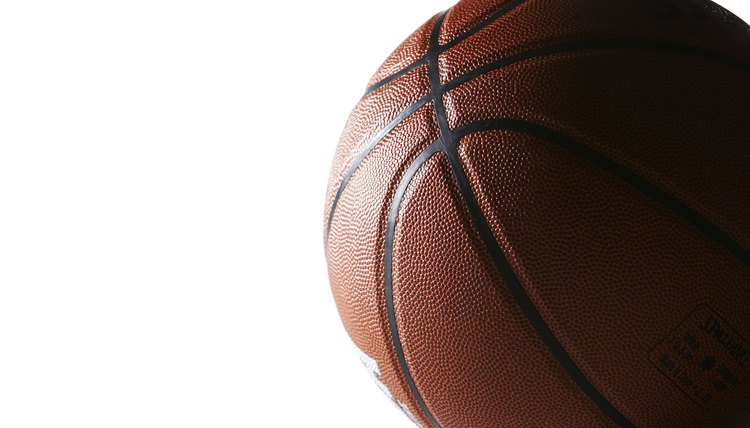How Are Basketballs Made?

Basketballs go through four separate steps during the manufacturing process, with each step helping to ensure that a ball performs the way it is expected. The four-step process includes the construction of the ball’s insides, the shaping of the ball’s insides, the construction and application of the ball’s cover and finally, testing and inspection.
The Ball's Inner Bladder
At a basketball's core is what's referred to as the interior bladder, which is made from black butyl rubber. Butyl rubber effectively retains air and gives the ball its bounce. The butyl rubber is melted into flat panels that are then attached together into the shape of a ball. A 1-inch hole is punched in the bladder to allow for installation of the air filler tube. The bladder is inflated, and if the bladder stays inflated for 24 hours, it passes the initial testing stage.
Shaping the Ball's Insides
While the bladder is round, it’s relatively misshaped. In order for basketballs to share a uniformed shape and size, they must be shaped with the help of a machine, which wraps polyester or nylon threads around the inner bladder. The threads are what create the spherical shape of the ball and prevent it from becoming deformed. Some balls are made with higher-quality threads, which in turn improve the performance of the ball. Street balls typically feature polyester thread, while professional balls are shaped with nylon thread.
The Ball's Cover
A basketball’s cover can be made from a variety of materials. The highest-quality balls are covered in quality leather. Other materials include synthetic rubber, rubber or composition. The material is unrolled and then cut into six separate panels that will eventually come together to wrap around the ball. Before the panels are placed on the ball, however, any embossed or stamped markings are placed onto the panels. If the panels are leather, they are then stitched together around the ball. Synthetic rubber, rubber and composition panels are held on with glue. Decals, information and foil markings are applied by hand after the panels have been sealed onto the ball. The finished balls are about 29.5 inches in circumference and weigh 20 to 21 ounces. The balls are then inflated and set aside for another 24 hours then inspected to see if they continue to hold air.
Testing and Inspection
Despite the two tests during manufacturing to check for air retention, basketballs also typically go through a final inspection and testing process. The bounciness of the balls are tested to make sure that they bounce to a certain height when at a specific inflation pressure. When dropped from 72 inches, the ball must rebound up to 52 to 56 inches. Minor details like artwork and decals are checked. Any extra glue between the panels is removed. Once the ball is fully checked, it’s deflated and packed in a polyethylene bag or boxed in packaging to then be sent out to a distributor.
References
Writer Bio
Kim Nunley has been screenwriting and working as an online health and fitness writer since 2005. She’s had multiple short screenplays produced and her feature scripts have placed at the Austin Film Festival. Prior to writing full-time, she worked as a strength coach, athletic coach and college instructor. She holds a master's degree in kinesiology from California State University, Fullerton.
